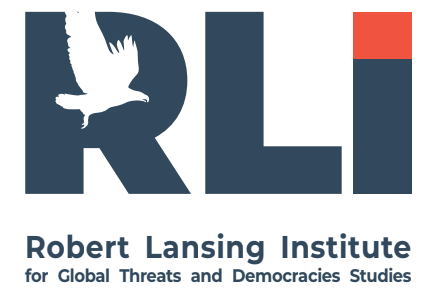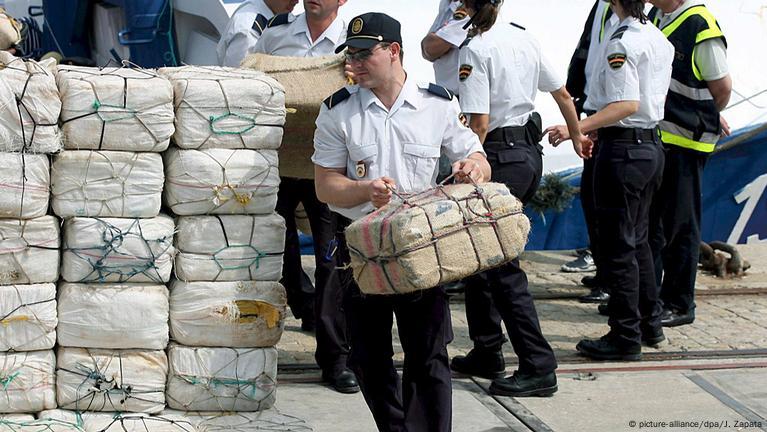Sweden’s Chief of Defence, Lieutenant General Mikael Claesson, stated that Russia’s acts of hybrid warfare against the West are not limited to deploying drones, conducting cyberattacks, and carrying out acts of sabotage. Moscow has also taken control of illegal migration routes and narcotics trafficking into Europe through North Africa as part of a broader strategy to destabilize the continent.
According to him, NATO leadership must subject Russia’s activity in the North African region to strict oversight. “The movement of drugs, migrants, and other criminal activity spreads very quickly across all of Europe and NATO territory,” the Swedish Chief of Defence said.
According to Frontex, the EU’s border and coast guard agency, the number of illegal migrants arriving in Europe through the central and western Mediterranean increased by a factor of 1.5 in 2025.
The number of migrants traveling to Europe through Libya rose by 50% year-on-year over the first nine months of the year, the agency reported. Most arrivals along this route originate from Bangladesh, Eritrea, and Egypt.
The Central Mediterranean remains the busiest route, accounting for nearly 40% of all illegal entries. In the Western Mediterranean, Algeria has become the most common point of departure; Algerian nationals account for almost three-quarters of detected migrants on this route. Over the first three quarters of 2025, illegal crossings along this corridor rose by 28%, Frontex reported.
Narcotics enter Europe primarily through the Gulf of Guinea, located off the West African coast. The region serves as the main gateway for cocaine shipments from South America to Europe. In recent months, several large-scale anti-trafficking operations have taken place there. In September, the French Navy reported that 54 tonnes of narcotics had been seized in the area since the beginning of the year.
Claesson also emphasized that Moscow is combining “sabotage, special operations, and even attacks against individuals” with strikes on critical infrastructure and the “exploitation of vulnerabilities in the information environment” in an effort “to divide us” and “undermine the cohesion” of the European community.
The statement by Swedish General Mikael Claesson indicates that Russia is expanding its arsenal of hybrid warfare against the West, employing not only military and cyberattacks but also control over illegal migration flows and narcotics routes. This demonstrates the systemic nature of Russia’s strategy, which spans multiple domains — from border security to societal stability. In this way, Moscow seeks to exert multidimensional pressure on European states.
Russia’s objective in this context is to destabilize Europe and weaken its ability to support Ukraine.
By using illegal migration and drug trafficking as tools of hybrid warfare, the Kremlin undermines internal security across the EU, forcing governments to divert resources away from supporting Kyiv. These pressures also generate additional social and political challenges for European administrations.
Moscow’s control over migration routes through North Africa is an attempt to exploit Europe’s geographic and societal vulnerabilities.
The increase in migrant flows via Libya and Algeria shows that these corridors have become key instruments of pressure. This strategy allows Russia to influence domestic politics in European states, where migration is often a source of intense political debate.
Russia has previously weaponized migration as a tool of hybrid coercion, using flows of Middle Eastern migrants to destabilize EU member states. Such actions created humanitarian crises at borders, provoked political disputes within European societies, and deepened polarization. These pressures forced European governments to focus on internal problems, reducing their readiness to counter Russia’s actions in the Middle East and Ukraine.
The use of narcotics trafficking as a hybrid weapon has a dual effect: it undermines societal security while simultaneously building criminal networks that can be exploited for political or intelligence purposes. Massive narcotics seizures in the Gulf of Guinea highlight the scale of the problem. This indicates that Moscow seeks to make Europe increasingly vulnerable to internal crises.
Political polarization in Western countries is a key vulnerability that Russia actively exploits.
Hybrid attacks, information operations, and migration crises all amplify internal divisions. The Kremlin’s goal is to fracture European societies, eroding their capacity for collective action and weakening solidarity with Ukraine.
The combination of migration pressure, sabotage, special operations, attacks on critical infrastructure, and information manipulation creates a comprehensive threat.
Russia now acts simultaneously in both the physical and digital domains, exploiting any vulnerabilities it can. This makes hybrid warfare particularly dangerous, as it lacks clear boundaries and manifests across multiple sectors of public life.
The Western response must be systemic and multi-layered.
This includes increasing control over migration routes and drug trafficking channels, expanding cooperation with North and West African countries, and strengthening NATO–EU coordination. Western institutions must not only monitor Russia’s activities but also build preventive mechanisms that make it impossible for Moscow to weaponize humanitarian crises. Equally important is reinforcing the information resilience of European societies to ensure that political polarization does not become a weakness that the Kremlin can exploit to divide and destabilize the continent.
How Russia Has Been Involved in Drug Trafficking to Europe: From Soviet Intelligence Operations to Modern Hybrid Crime Networks
Russia’s relationship with narcotics trafficking is long, strategic, and deeply intertwined with its intelligence services. This involvement goes back to the Cold War, when the KGB used drugs as tools of subversion, and continues today through the FSB–GRU–organized crime nexus that exploits narcotics both for profit and for political leverage.
I. Soviet-Era Precedents: Drugs as a Weapon Against the West (1950s–1991)
Operation “CHAOS” Counter-intelligence Response
While the U.S. launched Operation CHAOS to detect foreign influence in the anti-war movement, declassified CIA and FBI documents show that the KGB deliberately fueled drug circulation inside Western protest circles.
Most known pattern:
- KGB-linked operatives infiltrated radical left groups in West Germany, Italy, and the U.S.,
- Encouraged heroin, hashish, and LSD use to discredit movements,
- Positioned the West as morally corrupt.
Although evidence is partially indirect, Western agencies concluded Soviet services used drugs as a destabilization amplifier.
KGB Cooperation With Middle Eastern Narco-Sponsors (1970s–1980s)
This involved:
- Syrian intelligence,
- Bulgarian State Security (DS),
- Cuban intelligence,
- East German Stasi.
Most documented cases:
“Bulgarian Connection” (Heroin Pipeline)
One of the most established networks:
- The Bulgarian DS (a KGB satellite) oversaw heroin shipments from Turkey and Lebanon to Western Europe.
- Used the state shipping line “Bulgaria Maritime Navigation.”
- Proceeds funded communist intelligence operations.
This is one of the best-documented state-run drug-trafficking networks in the Cold War.
b) Syrian Regime + Soviet Bloc
- The Assad regime allowed heroin labs in Lebanon’s Bekaa Valley.
- Soviet-aligned groups used drugs to finance militant organizations and undermine Western influence in the Middle East and Europe.
c) Stasi facilitation
Stasi turned a blind eye to heroin passing through East Berlin into West Berlin as a destabilization tool.
KGB Use of Afghan Heroin (After 1979)
During and after the Soviet invasion:
- Soviet military and KGB officers participated in heroin trafficking into Central Asia, Iran, and Eastern Europe.
- Purpose:
– Fund covert operations
– Maintain influence over Afghan warlords
– Undermine Western forces by stimulating addiction
When the USSR withdrew, former KGB networks evolved into Russian–Central Asian organized crime structures.
Post-Soviet Russia: The Intelligence–Mafia Nexus (1991–Today)
After the Soviet collapse, the line between the state and organized crime dissolved.
Key players:
- FSB,
- GRU,
- Solntsevskaya Bratva,
- Tambov mafia,
- Dagestani/Chechen criminal groups.
Russia’s strategy today combines profit, political leverage, and destabilization.
Major Modern Schemes of Russian Drug Trafficking Into Europe
The “Northern Route” Heroin Corridor (Afghanistan → Russia → Europe)
Russia is the central transit hub for Afghan heroin moving into Europe.
How it works:
- 25–35% of Afghan heroin passes through Russia and Belarus.
- Russian police, FSB, and local officials often facilitate or ignore the flow in exchange for bribes.
- Organized gangs in St. Petersburg, Moscow, and the Urals control the pipelines.
Why it matters:
- Profits feed both organized crime and corrupt elements in Russian power structures.
- It gives Moscow indirect leverage over European criminal markets.
Russian Mafia + Latin American Cartels (Cocaine)
Documented by European law enforcement (Europol, Italian DIA, Spanish Guardia Civil):
Key cases:
a) 2018 – Cocaine shipment from Ecuador to Russian embassy in Argentina
- 389 kg of high-grade cocaine discovered inside the Russian Embassy school in Buenos Aires.
- Operation linked to Russian diplomats and FSB-connected businessmen.
- Destination: Moscow → Europe.
This remains one of the strongest proofs of state-linked Russian cocaine trafficking.
b) Solntsevskaya Bratva cooperation with Colombian cartels
- Drug money laundered via Cyprus, Greece, Spain, and Austria.
- Revenues reinvested in Russia with state protection.
c) Russian mafia in Spain (“Operation TROIKA”, 2008)
- Spanish police proved mafia networks linked to FSB/GRU involved in cocaine distribution and money laundering.
Synthetic Drugs and Chemical Precursors
Russia is a major producer of:
- methamphetamine starting materials,
- new psychoactive substances (NPS),
- synthetic opioids.
These enter the EU via:
- Kaliningrad,
- Belarus,
- Baltic ports.
FSB often uses chemists with historical ties to Soviet military labs.
Russian military/intelligence involvement in Captagon (Post-2015; Syria)
There are credible reports from Western and Middle Eastern intelligence that:
- Russian military police and GRU-linked units in Syria have facilitated the export of Captagon to Europe.
- Cooperation with Assad’s 4th Division allows Russia to profit from the $10+ billion Captagon trade.
How Russia Uses Drug Trafficking Politically to Undermine the West
Funding loyal criminal networks in Europe
Russian intelligence cultivates:
- Serbian mafia,
- Montenegrin “Kavac” and “Skaljari” clans,
- Italian ’Ndrangheta intermediaries.
These networks can be used for:
- political financing,
- influence operations,
- destabilization.
Fragmenting EU law enforcement cooperation
Russia benefits from:
- corruption in Balkan police structures
- diverging laws between EU states
- asylum for criminals in Russia
This reduces Europe’s capacity to fight organized crime.
3. Using drugs to destabilize societies
This echoes KGB doctrine.
High availability of cheap heroin or synthetics:
- increases social pressure,
- burdens Western health systems,
- fuels crime,
- creates political narratives useful to far-right and far-left movements (which Russia supports).
4. Weaponizing migrants through narco-networks
Routes through:
- Kaliningrad,
- Belarus,
- Russia → Baltic states
combine trafficking with political pressure during migration crises.
The Most Known Documented Cases (Summary)
- Bulgarian DS/KGB heroin pipeline (1960s–1990s) — state-run and proven.
- Stasi facilitation of heroin into West Berlin — documented in archives.
- Soviet military/KGB involvement in Afghan heroin trade (1979–1991).
- Russian embassy cocaine scandal in Argentina (2018) — FSB-linked.
- Spanish Operation TROIKA (2008) — Russian mafia + FSB links.
- Russian-organized Northern Route heroin corridor (current).
- Syria-based Captagon trafficking with Russian military assistance.
- Russian mafia–Latin American cartel cooperation across Europe.
Russia Views Drug Trafficking as a Tool, Not Just a Crime
From the Cold War to the present, Russia (and previously the USSR) has used narcotics trafficking for:
- political destabilization,
- funding covert operations,
- corrupting Western institutions,
- cultivating criminal networks as proxy assets,
- weakening European cohesion,
- undermining NATO-aligned states.
Modern Russia continues this tradition — now embedded in the state-crime-intelligence ecosystem centered around the FSB, GRU, and Russian mafia clans.
Russia has weaponized migration and narcotics trafficking as part of a coordinated hybrid warfare strategy.
Lieutenant General Mikael Claesson’s assessment confirms that Moscow is deliberately manipulating migration flows from North Africa and exploiting narcotics routes through the Gulf of Guinea. These are not isolated criminal activities, but state-enabled operations designed to deepen Europe’s internal vulnerabilities.
North Africa is becoming a major battleground in Russia’s confrontation with the West.
By influencing Libyan and Algerian networks, Russia can trigger migration surges into Italy, Malta, Spain, and France. Moscow leverages its ties with local militias, intelligence services, and criminal actors to induce controlled instability in regions already suffering from weak governance.
Narcotics trafficking is used as both a financing tool and a destabilization instrument.
The intensifying flow of cocaine through West Africa aligns with Russia’s growing influence in countries like Mali, Burkina Faso, and Niger (via Wagner/“Africa Corps”). Criminal networks serve as logistical hubs, cash generators, and deniable proxy channels for Russian intelligence.
Europe’s internal political polarization is a key Kremlin target.
Migration crises and rising drug-related crime feed nationalist and anti-EU narratives. Russia deliberately accelerates these trends to undermine democratic cohesion, push extremist parties upward, and weaken support for Ukraine.
Russia’s hybrid operations integrate physical, cyber, informational, and criminal tools.
Moscow no longer separates military activities from organized crime, cyberattacks, or information warfare. Instead, it deploys them simultaneously to stretch European governments to the breaking point and to redirect resources away from supporting Ukraine.
1. Why Russia Uses Migration as a Weapon
Migration is an exceptionally potent hybrid tool because it triggers immediate political and societal stress:
- It polarizes domestic politics.
- It strains welfare systems and border security.
- It empowers far-right and far-left actors (many of which have financial or ideological ties to Moscow).
- It creates pressure on EU cohesion and joint decision-making.
Russia’s involvement in Libya and the Sahel gives it leverage over the most sensitive entry points of the EU, including:
- Lampedusa (Italy)
- Canary Islands (Spain)
- The Western and Central Mediterranean corridors
These are strategically exploited to generate periodic political crises inside Europe.
Narcotics: A Long-Term Russian Tool for Strategic Influence
Drug trafficking is a dual-use instrument for Russia:
Financial:
It provides millions in off-book revenue for Russian intelligence, PMCs, and proxy groups.
Operational:
Criminal networks linked to narcotics smuggling can be mobilized for:
- surveillance,
- money laundering,
- political financing,
- assassinations,
- logistics for GRU/FSB operatives.
By fueling drug markets in Europe, Russia contributes to long-term societal degradation, increased crime, and public distrust in governments.
The African Theater: Pivot Point of Russia’s Hybrid Reach
Russia’s African operations are no longer limited to military contractors.
They now include:
- political manipulation,
- influence over migration routes,
- partnerships with smugglers,
- control of coastal chokepoints,
- protection of drug traffickers.
Countries like Mali, Libya, Niger, CAR, and Sudan are central nodes in Russia’s effort to embed itself in the security architecture of Africa—while harming European stability.
Hybrid Attacks Against Infrastructure and Information Systems
Claesson’s warning highlights a dangerous trend:
Russia’s sabotage operations in Europe (Norway, UK, Baltics, Germany, Finland) are increasingly synchronized with information operations and organized crime.
A typical Russian pattern:
- Migrant surge or drug trafficking spike,
- Online disinformation amplifies the crisis,
- Sabotage or cyberattack hits energy or transport links,
- Political polarization intensifies,
This multi-layered, time-coordinated methodology is Moscow’s signature hybrid warfare doctrine.
Strategic Implications
Europe faces a sustained, multi-domain Russian offensive.
Russia’s goal is not immediate collapse but cumulative degradation:
- draining resources,
- weakening unity,
- eroding public morale,
- and shifting attention away from Ukraine.
The hybrid war is intended to be permanent and attritional.
EU and NATO must rethink border security as a national-security function, not a policing task.
Migration flows and drug routes are now part of Russia’s confrontation with the West.
Traditional law enforcement cannot counter a state-backed hybrid threat.
Africa policy becomes central to European defense strategy.
Europe can no longer ignore Russia’s penetration of:
- Libya,
- Mali,
- Niger,
- Algeria,
- Sudan,
- the Sahel at large.
These regions now serve as operational extensions of Russian hybrid warfare.
Disinformation and domestic extremism will intensify.
Russian intelligence will continue to weaponize:
- far-right anti-migration sentiment,
- far-left anti-NATO narratives,
- conspiracy networks,
- anti-government protests.
Controlled migration spikes and drug-related criminality will be used as fuel.
Europe must adopt a unified approach or risk fragmentation.
Fragmented national responses will:
- increase rivalry among EU member states,
- embolden Russia,
- undermine Ukrainian support,
- and empower extremist political forces.
Only coordinated EU/NATO action can neutralise the multi-dimensional threat.
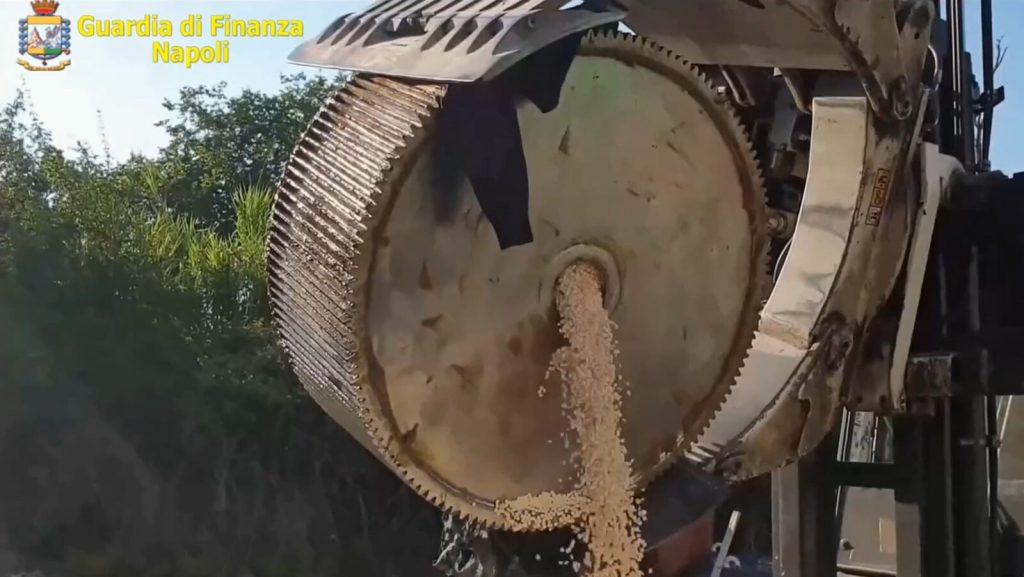
More on this story: Assad regime ramping up facilities for drug smuggling
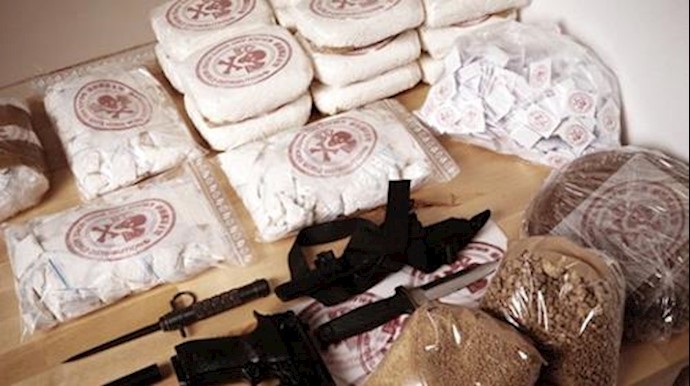
More on this story: Hezbollah’s involvement in cocaine trafficking
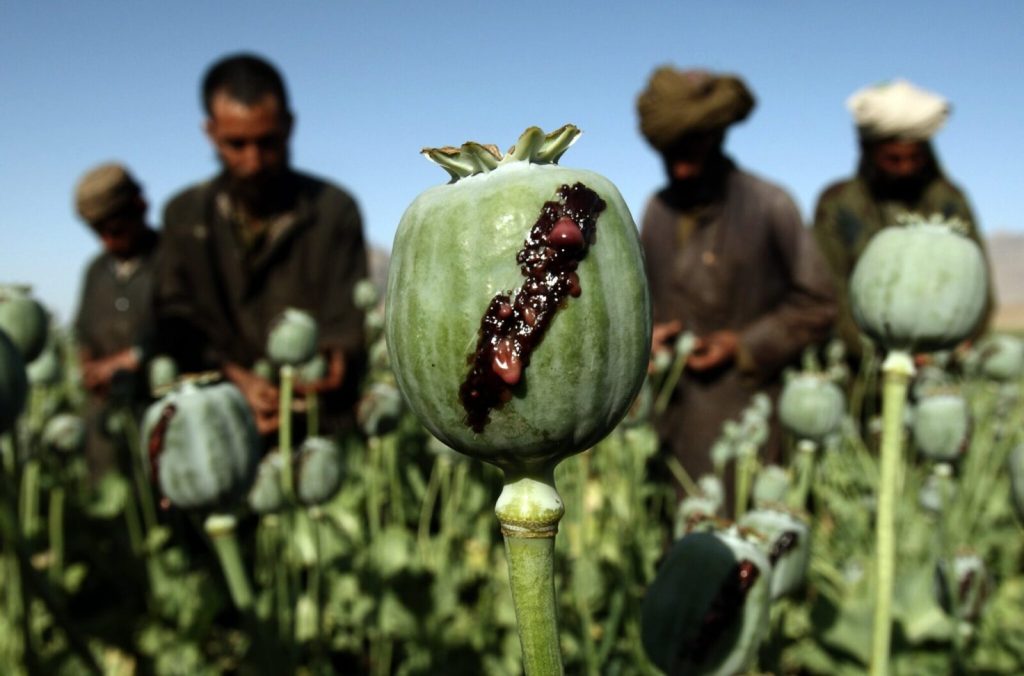
More on this story: Afghan heroin trafficking and control
